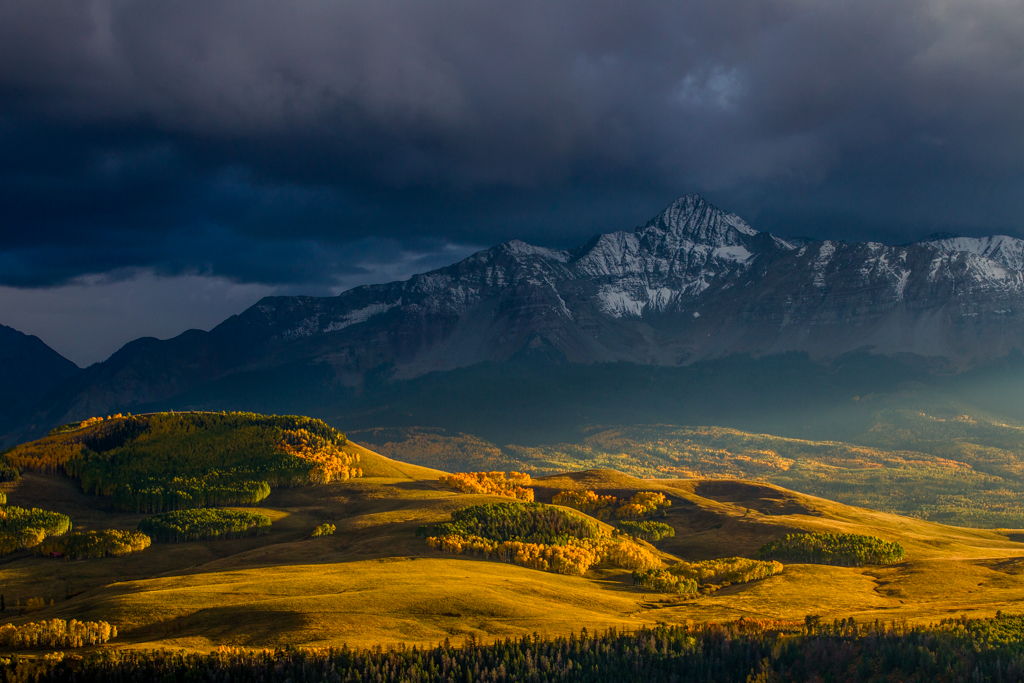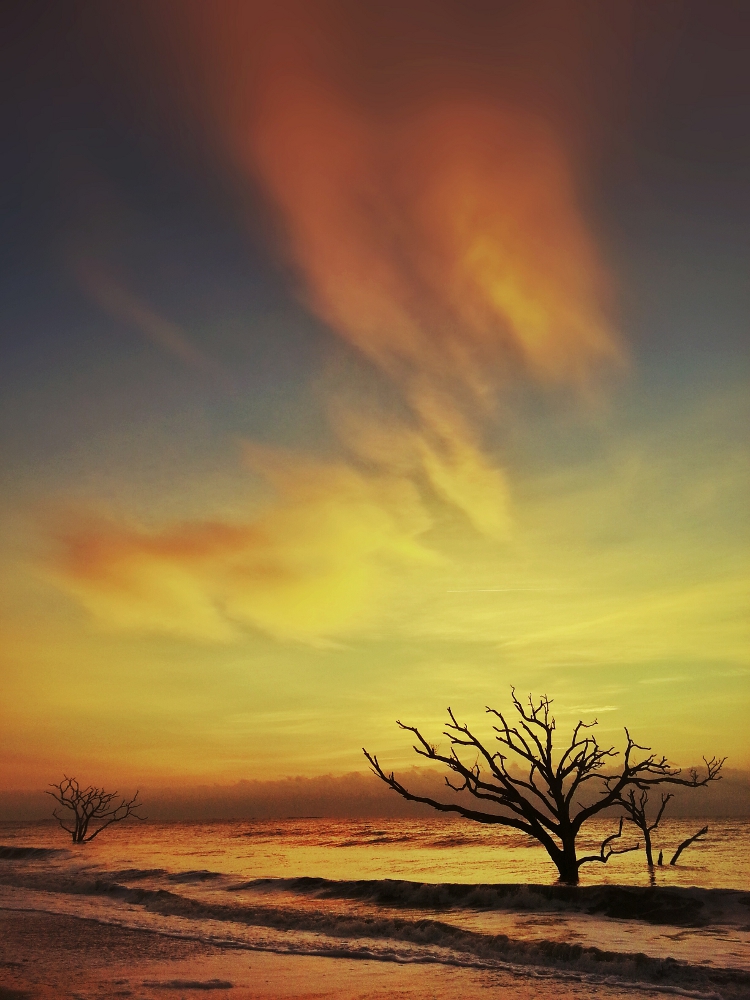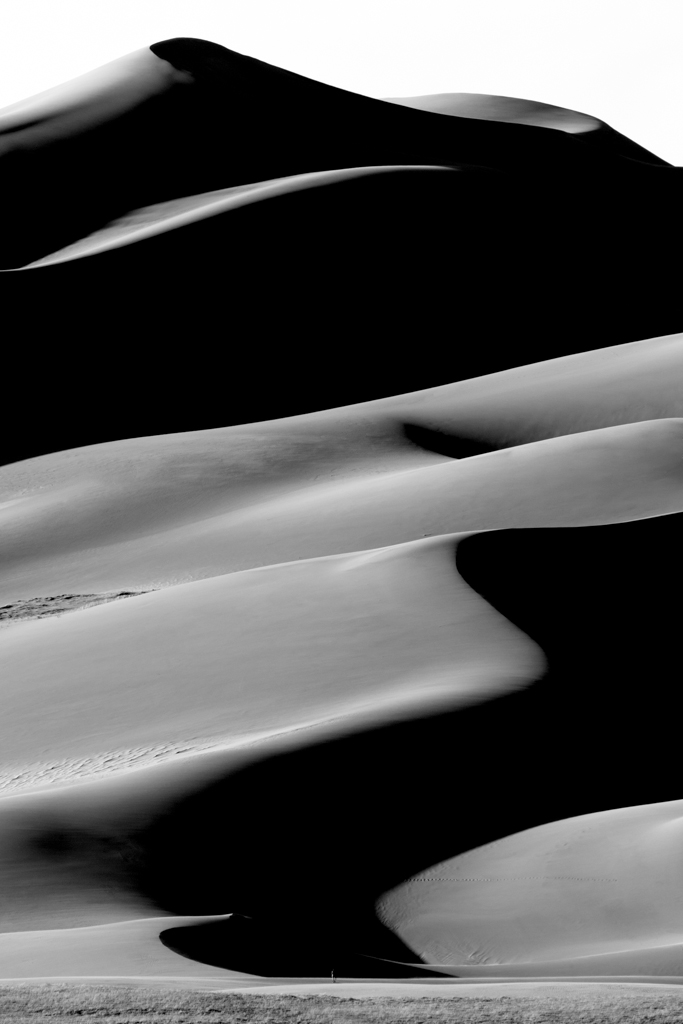COLBY BROWN is one of the most followed photographers and photo educators on the internet. Nearly 2.9 million people seek his advice on Google+. He’s also an adventurer, having led photo workshops across the Himalaya, throughout Latin America, and countries as diverse as Iceland and Israel.
When we spoke about mobile photography and camping — and how to capture the energy and inspiration of being in nature — Colby kept coming back to the same main point. No matter what gear he’s using, whether he’s on a professional shoot or just spending time in the Indian Peaks with his family, what allows him to get epic photos is all based on a calculated approach.
Here’s how he does it, and how you can too.
[DM] So often when we see pro photographers’ work like yours, it’s some spectacular terrain, say an ice formation in the Fjordlands or a slot canyon in Zion. But the reality is, most of us live and camp in more humble places like the Southern Piedmont or the prairie, which may not have that innate sense of grandeur. Is it possible to still get epic shots out of these places?
[CB] Absolutely. It seems fitting to start with one of my all-time favorite quotes, which is by Marcel Proust: “The real voyage of discovery consists not in seeking new landscapes, but in having new eyes.” I think photography is all about changing perspective. It comes down to creative practices that start right in your backyard. I always say that if you can’t find something creative or beautiful to photograph in your backyard, you’re not looking hard enough. Every place has something unique. And a lot of it is timing. Whether you have a mobile phone or a $7,000 DSLR, you still need to have the same three principles: Interesting subject, quality light, and a solid composition. And if you incorporate those three elements, you’re going to have a better photo than someone who’s just snapping away without including them.
Just think about someone who takes a photo of the Smoky Mountains in the middle of the day. It doesn’t really matter what device they’re using. Now compare it with someone who took the time to stop at one of the beautiful overlooks at sunset with the fog rolling in over the blue hills. It’s obvious who’s going to come away with the better photo. I don’t think gear or location should affect your ability to capture beautiful photos. It all depends on your mindset.
[DM] How then do we move from just “snapping shots” of the places we’re hiking through or camping in to getting into this mindset?
[CB] You need to follow a step-by-step process. Over time you won’t even think about it anymore; it will just begin to come natural, and the start of it is actually quite simple: Begin by asking yourself, What is my subject? It can be tangible things — your son playing by the campfire, wildlife walking through the campground, a sunset, etc. But don’t limit yourself. You don’t have to define something that’s necessarily tangible. Your subject could be an emotion. It could be a color, a pattern, anything. For example, your son at the campfire: Maybe it’s not the fact that he’s by the fire but that he’s almost tearing up because he’s never been by a fire before and he’s so excited.
[DM] It makes total sense.
[CB] The next question is, How do I compose the image? You’ve defined your subject, say, as the sunset through clouds over a mountaintop. Now, how do you compose the image so the subject — the light bouncing off the mountainside through the clouds — is really emphasized? You need to give the clouds sufficient room so the viewer can see that they are what you’re trying to emphasize. If your subject is the clouds, but you frame the image so that we’re seeing tons of trees and just a little bit of mountain and sky, you’ve actually changed your subject matter based on this composition. You need to stay cognizant of what your subject matter is, and compose your shot based around that.
[DM] Got it.
[CB] The last question is, Do you want to focus on motion or depth of field? Motion is obviously a subject moving, say your child running through the woods, or maybe she’s sitting there by the fire and you want to capture the movement of the flames. Ask yourself: Do you want to freeze those flames in time or give them that slow, flowing feeling? Or, if it’s depth of field, maybe you’re trying to capture an individual person and you want to make sure the background is blurred so that they stand out. All of these technical choices are also creative choices.
[DM] One particular challenge I’ve always found when trying to capture the feel of camping and exploring here in Southern Appalachia is that the heavy forest makes everything dark and shadowy. Any advice for taking pictures in the woods?
[CB] Yep. The question is conducive to any low-light photography with a mobile phone. The beauty of the phone is its accessibility. It’s always with us. But when it comes to low-light photography, most cameras inside these phones are limited. A few tips I have to fix that:
- Control your own motion shake. This means to control your breathing. A lot of people don’t realize that when you breathe in and out, your body sways. Take three short breaths, then hold it, then take the photo.
- Use your body as a tripod. Create a more stable approach. If you’re in a wooded area, for example, and you’re trying to capture a meadow scene, try leaning against a tree, using it as a back brace. You can also lie down.
- Don’t extend your arms so much when using your phone. Your arms move a lot more than you think. Keep your hands and arms close to your body to minimize that sway.
- If you find you’re getting way too many brights or too many darks in an image, you need to readjust where you’re focusing your camera. Inside your phone is a light sensor that’s determining how the photo should be exposed. If you’re pointing it at a bright area, any of the dark shadows are going to be very dark or completely overblown. And if you point it at the shadows, the reverse will happen: Any highlights, any bright points like the sun or other ambient light, can be overblown. So sometimes you need to experiment and find the right balance between the two if you’re trying to capture darker wooded areas.
[DM] This seems like the one area where having different equipment, even just a simple point and shoot and a small tripod, can make a big difference.
[CB] Absolutely. I’d be lying if I said I didn’t thoroughly enjoy mobile photography. I take my phone everywhere I go, from the Himalaya to the Amazon. But at the end of the day, it has limitations. So if you want more creative control over the image, you have to step things up. Generally it’s mobile phone, then point and shoot camera, mirrorless camera, and then DSLRs. And depending on how serious you want to go, you have a lot of different options both on price point and technical capabilities to take your photography to the next level when you go camping.



